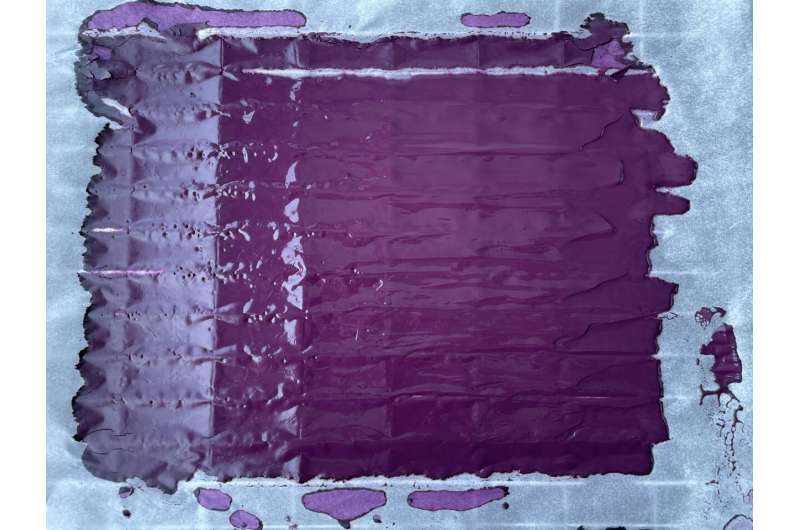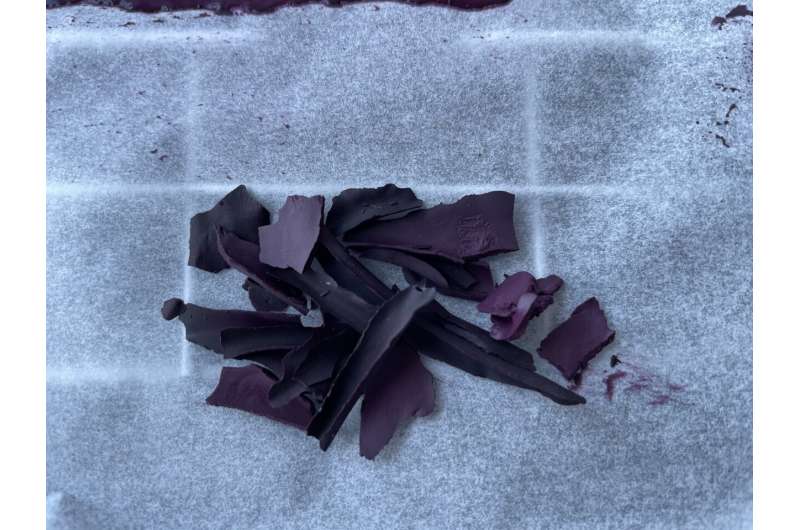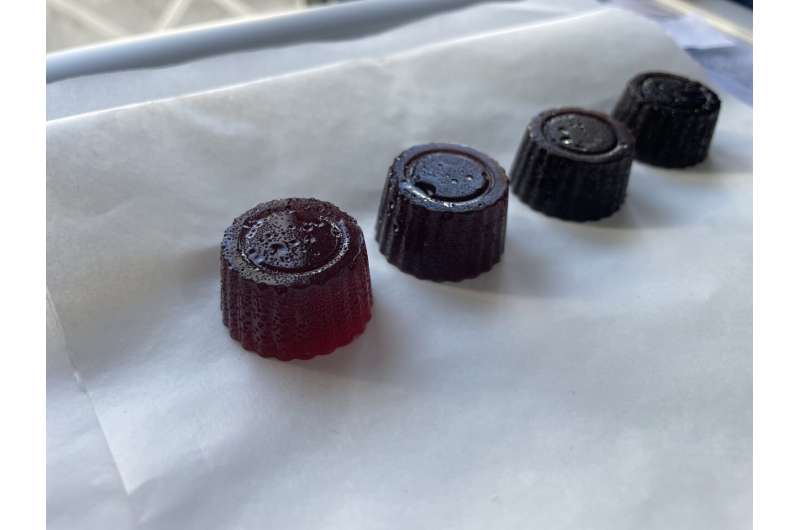This article has been reviewed according to Science X's editorial process and policies. Editors have highlighted the following attributes while ensuring the content's credibility:
fact-checked
peer-reviewed publication
proofread
A sweet solution: Turning winery waste into jelly

Researchers in Turkey have proposed a new sustainable solution for winery waste. In a new study published in the Journal of the Science of Food and Agriculture they have demonstrated how one of the most significant by-products from the winemaking industry can be used in gelatin-based sweets, as a low-cost natural coloring agent with added health benefits.
Wine lees are the residue left over after fermentation in the winemaking process, mainly consisting of dead yeast cells. Each year up to 2.5 million tons of lees are produced globally. While they can become a pollutant if released directly into the environment, they have properties that can enhance the nutritional and functional properties of various products including yogurt, ice cream and even burgers.
The confectionery industry was valued at $187 billion in 2022 and is expected to grow. However, until now, the use of wine lees in gelatin-based confectionery has not been reported. In this study, the team compared the properties of jellies colored with wine lees and a widely used commercial colorant. They demonstrated that wine lees improved the texture of the jellies while also adding a desirable flavor profile.

Dr. Gülce Bedis Kaynarca, Assistant Professor at Kırklareli University, Turkey, and corresponding author of the study, explained the motivation behind their research. "Confectionery industries often use food colorants, particularly to enhance the appeal of confectionery. However, the synthetic food colorants often used lack aromatic properties and beneficial components and, despite their stability, may contain toxic components."
"Wine lees, the second largest by-product of the winemaking industry, are rich in anthocyanins, which are beneficial for our health. This prompted us to investigate the potential for wine lees—an industrial waste—to be used as a natural color agent and a bioactive component in jelly-type soft confectionery."
Food colorants are a growing market, predicted to reach $4.77 billion by 2026. Kaynarca notes that consumers are increasingly looking for products with clean labels and natural plant components, making wine lees an attractive option. In addition, wine lees are cheaper than the commercial alternatives.

"While wine lees range in price per kilogram in October 2023 from $1.36–$3, food dyes have a much wider price range, beginning at $5 and going up. In contrast to alternative coloring agents, the utilization of wine lees as a coloring agent not only results in a cost reduction for the products but also confers a comprehensive economic benefit by imparting functional properties to them," explained Kaynarca.
She noted that repurposing wine lees could also cut waste disposal costs for wineries, as well as "contributing to the reduction of water pollution and greenhouse gas emissions through waste management."
Kaynarca hopes the research will open doors to other potential applications for wine lees. "Due to their high phenolic content and antioxidant activity, wine lees may be incorporated into the formulation of dietary supplements and healthful snack foods with potential cardioprotective and anti-cancer properties," she said.
More information: Tuncay Gümüş et al, Investigating the potential of wine lees as a natural colorant and functional ingredient in jelly production, Journal of the Science of Food and Agriculture (2023). DOI: 10.1002/jsfa.13014
Journal information: Journal of the Science of Food and Agriculture
Provided by Society of Chemical Industry





















